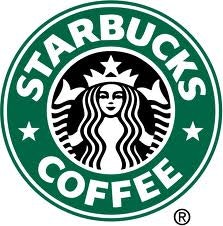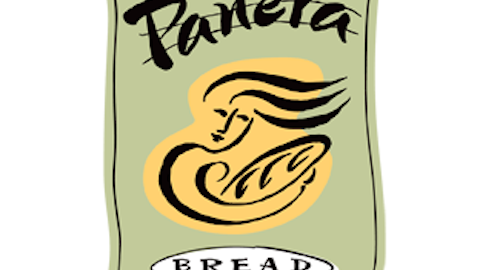Seven years ago, coffee giant Starbucks Corporation (NASDAQ:SBUX)’s future looked grim. Bearish critics claimed that its market was saturated and that its best days were behind it. Between 2006 and 2008, the company’s margins crumbled, its earnings plunged, and its share price bottomed out at around $8 per share.
However, founder and former CEO Howard Schultz returned in early 2008, and his forward thinking plans for future growth paid off. Back in 2008, Schultz outlined his four primary strategies in rebuilding the brand he created – improving its domestic business, rebuilding an “emotional attachment” with customers, expanding with long-term goals in mind, and increasing its global presence into untapped markets.
Over the following five years, Schultz was successful at achieving those goals, silencing the critics who claimed that Starbucks Corporation (NASDAQ:SBUX)’s days of explosive growth were over. The company’s recently reported third quarter earnings, which Schultz called the “best across-the-board third-quarter performance in our 42-year history,” was a strong indication that the company’s best days might still be ahead of it.
The best third quarter in history

Starbucks Corporation (NASDAQ:SBUX)’s robust same-store sales growth in China surprised some analysts, who had expected the country’s economic slowdown to take a toll on discretionary spending. Others had feared that Starbucks Corporation (NASDAQ:SBUX)’s aggressive expansion into Asia would lead to disappointing sales, since Starbucks’ coffee is still priced $3 to $6 globally – which is considered quite expensive in emerging economies. It turns out that neither concern was justified, and a growing middle class in urban areas continued fueling demand for Starbucks’ drinks.
The company is expanding heavily into China and Southeast Asia, and has focused on boosting its store count in Indonesia, Malaysia and the Philippines, which Schultz considers valuable growth markets. During the quarter, Starbucks opened 341 new locations worldwide, a big jump from the 231 stores it added in the prior year quarter, bringing its total global store count to 19,209.
Crushing the competition
Starbucks’ improvement across all global regions was a stark contrast to McDonald’s Corporation (NYSE:MCD), which recently reported global same-store sales growth of 1% due to sluggish demand in Europe and Asia. Over the past decade, McDonald’s Corporation (NYSE:MCD) has steadily expanded its McCafé line of beverages and desserts with three main goals in mind: to compete with Starbucks, increase afternoon sales traffic, and balance out rising commodity prices. McCafé’s cheaper fare can be considered a threat to Starbucks’ core products, but the two companies still occupy two different markets, as seen in Starbucks’ strong third quarter earnings.
Starbucks also outperformed Panera Bread Co (NASDAQ:PNRA), the quick serve bistro eatery that is often called “The Next Starbucks.” In its most recent quarter, Panera posted top and bottom line growth of 11% and 16%, respectively, and same-store sales rose 3.7%. All three of those key figures came in lower than Starbucks, and Panera Bread Co (NASDAQ:PNRA) also lowered its full year earnings and same-store sales guidance.
Some investors had expected Panera Bread’s bistro dining environment, espresso bar, and healthier fare like sandwiches, salads, soups and pasta to steal market share away from Starbucks’ light lunch crowd. Those predictions didn’t come true, although Panera’s “bistro effect” continues to make waves through the rest of the fast food industry, with companies like Wendy’s upgrading their restaurants to offer healthier sandwiches in a more upscale dining environment.
A more diverse menu
Although Starbucks fared much better than McDonald’s or Panera Bread this quarter, it continues diversifying its menu offerings to become a full-featured dining establishment focused on lighter fare. In April, the company added new, higher-priced sandwiches, salads and grain bowls to its menu. It also announced a partnership with Danone to produce Greek yogurt parfaits starting next year, in a bid to compete with dessert offerings at McDonald’s and other rivals.
Starbucks’ commitment to diversifying its menu options should keep it competitive and increase the company’s versatility if commodity prices rise or discretionary income wanes – two primary reasons that Starbucks nearly slid into unprofitability at the nadir of the economic crisis. It will also give it a competitive edge against other coffee and dessert contenders, such as Dunkin’ Brands, its subsidiary Baskin-Robbins, and Krispy Kreme.
The Foolish Bottom Line
For the full year, Starbucks increased its earnings forecast to $2.22 to $2.23 per share, up from its original forecast for $2.12 to $2.18 per share. Revenue is expected to rise 10% to 13%, in line with analyst estimates. In closing, let’s take a look at how Starbucks measures up to its industry peers.
5-year PEG | Trailing P/E | Price to Sales (ttm) | Debt to Equity
| Profit Margin | Qty. EPS Growth (y-o-y) | Qty. Revenue Growth (y-o-y) | |
Starbucks | 1.66 | 34.68 | 3.73 | 10.32 | 11.06% | 25.40% | 13.30% |
McDonald’s | 2.07 | 17.92 | 3.53 | 84.04 | 19.85% | 3.70% | 2.40% |
Panera Bread | 1.40 | 26.12 | 2.15 | No debt | 8.32% | 15.60% | 11.00% |
Advantage | Panera | McDonald’s | Panera | Panera | McDonald’s | Starbucks | Starbucks |
Source: Yahoo Finance, 7/30/2013
Although Panera is the cheapest based on five-year growth valuations, Starbucks has the best top and bottom line growth, reinforced by strong margins. At nearly 35 times trailing earnings, Starbucks looks considerably more expensive than either McDonald’s or Panera, but if Starbucks’ third quarter is a preview of things to come, that premium could be well justified. Starbucks’ ambitious global expansion and its strategic menu diversification indicate that today’s prices could seem like a bargain in retrospect.
The article Why Starbucks Is Effortlessly Taking Over the World originally appeared on Fool.com.
Leo Sun owns shares of Starbucks. The Motley Fool recommends McDonald’s, Panera Bread, and Starbucks. The Motley Fool owns shares of McDonald’s, Panera Bread, and Starbucks. Leo is a member of The Motley Fool Blog Network — entries represent the personal opinion of the blogger and are not formally edited.
Copyright © 1995 – 2013 The Motley Fool, LLC. All rights reserved. The Motley Fool has a disclosure policy.





